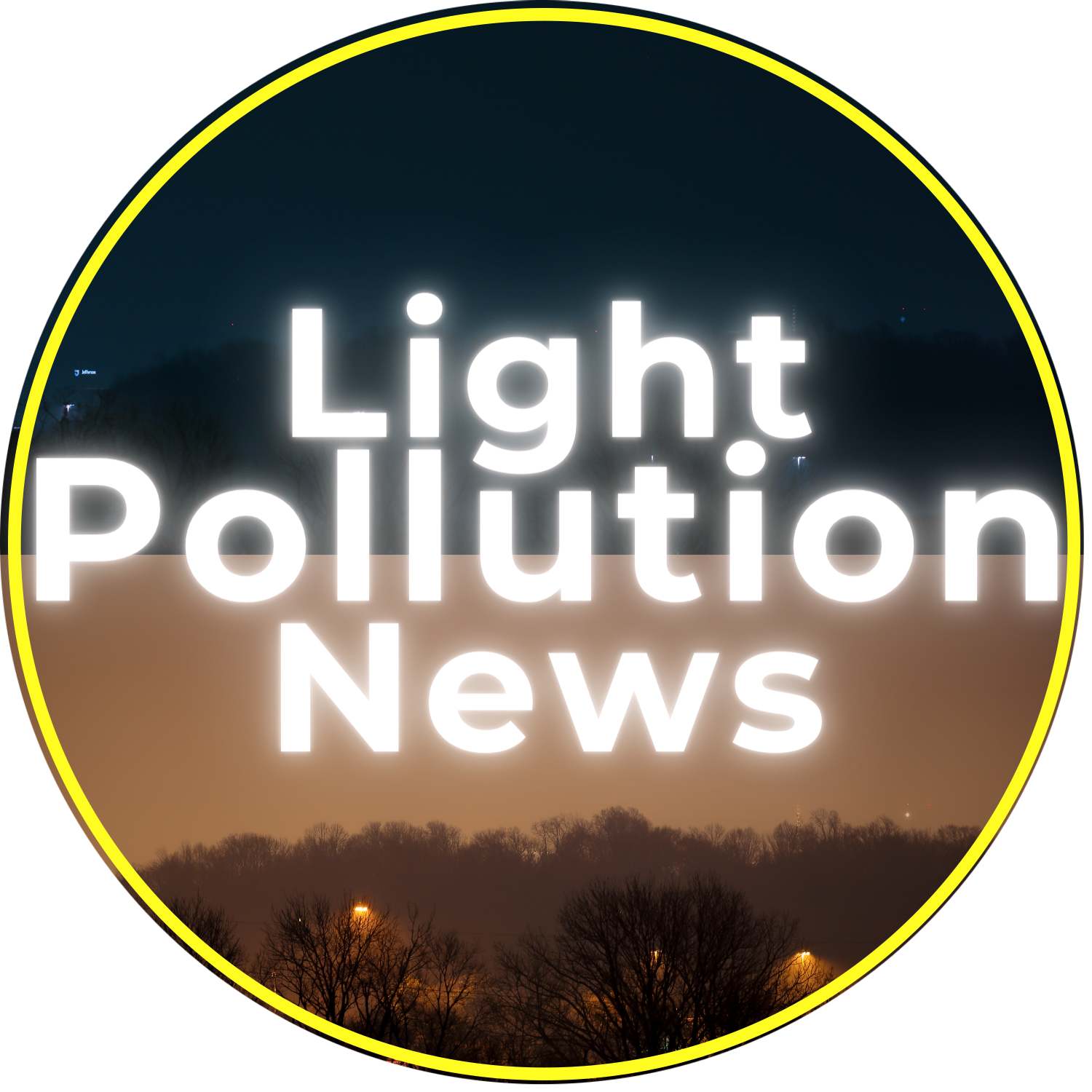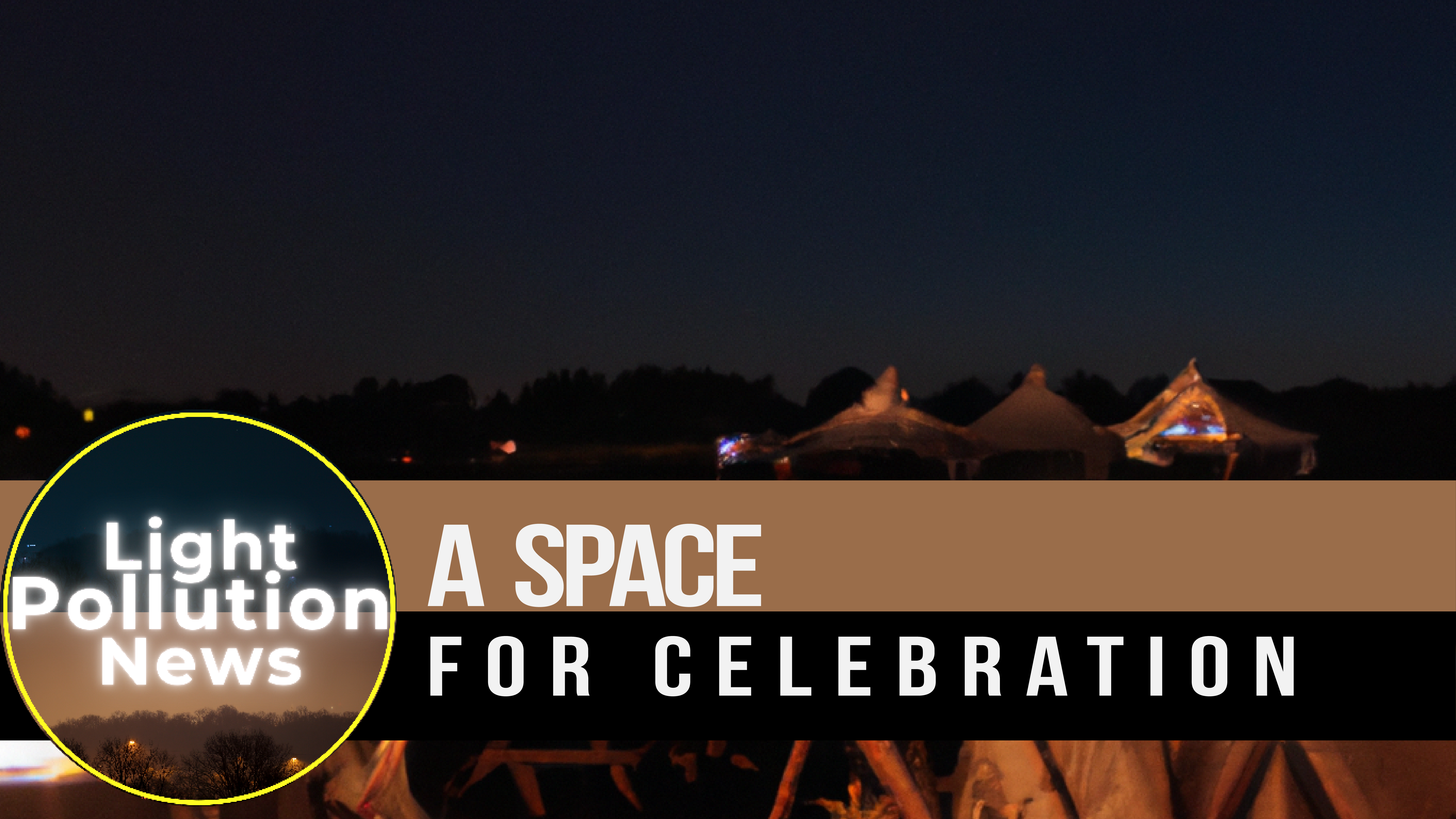
Join the conversation at r/lightpollutionnews or Follow us @Light.Pollution.News or LightPollutionNews. Join our mailing list.

February 2024: A Space for Celebration, Light Pollution News.
Host:
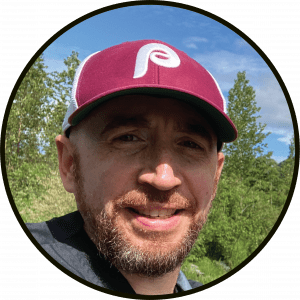
Guests:
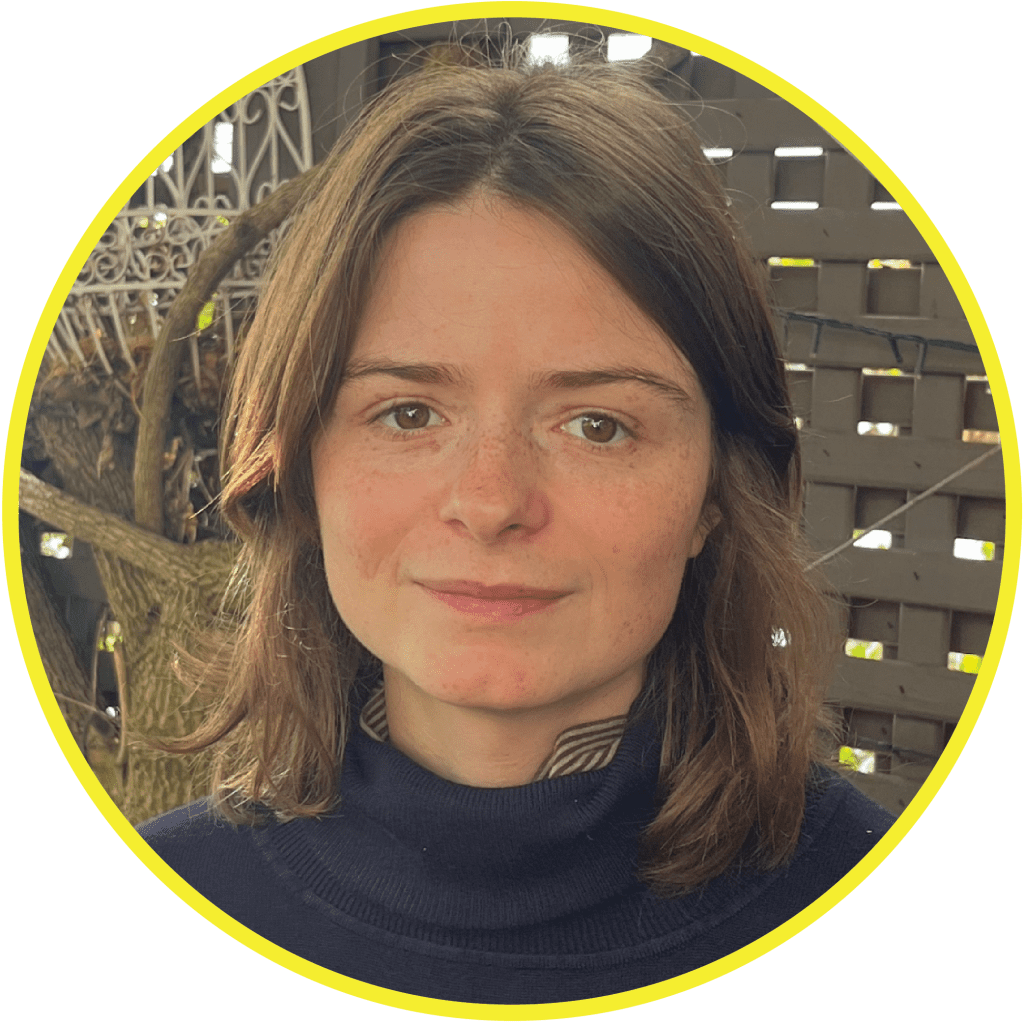
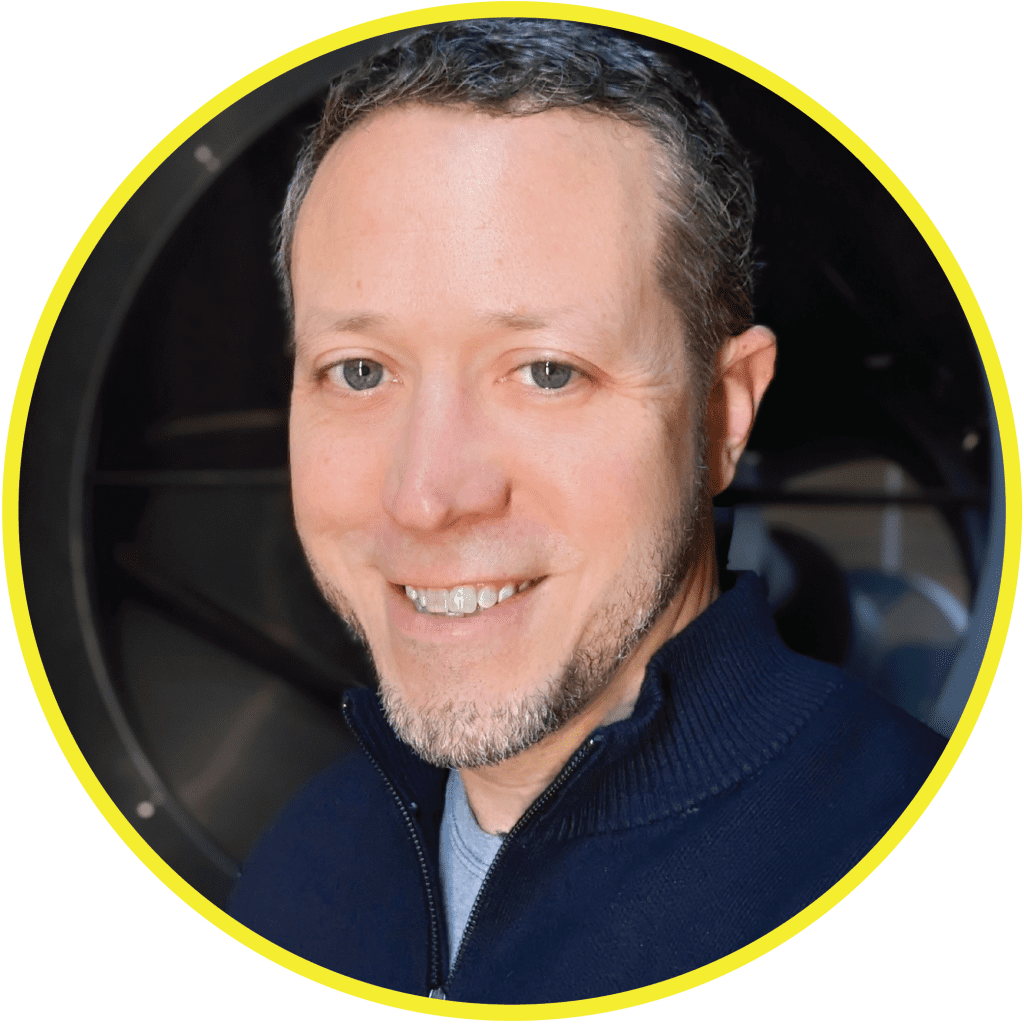
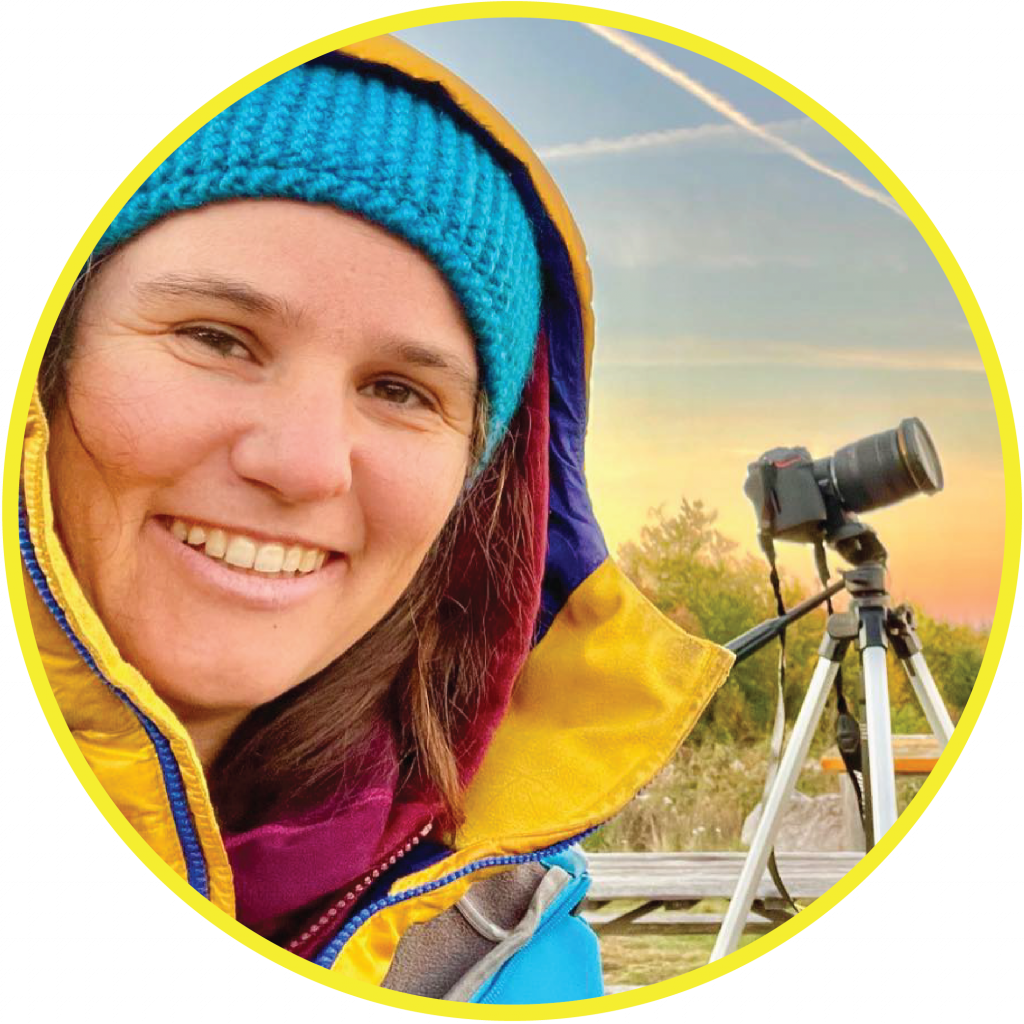
Lauren Collee
Lauren Collee is a freelance writer who recently completed her PhD on the cultural lives of light pollution. She has taught courses on Science & Society and the Environmental Humanities at The University of Sydney and The University of New South Wales. Her writing on technology, culture, and film has been published in The Baffler, Wired, The Los Angeles Review of Books, Real Life Magazine, The Public Domain Review, The Sydney Review of Books, and more. She grew up in Eora/Sydney where she now works and lives.
Tim Brothers
Tim Brothers is the Observatory Manager at MIT’s Wallace Astrophysical Observatory and a Technical Instructor in the Department of Earth, Atmospheric and Planetary Sciences. He also co-founded the Massachusetts chapter of DarkSky International, where he is primarily focused on outdoor lighting policy in the region. As part of that work, he recently completed a case study measuring the change in skyglow after retrofitting HPS streetlights to 2200 K LEDs. Tim was recently awarded a minor planet designation, asteroid (28992) Timbrothers, for his work on asteroid detection.
Tara Roberts Zabriski
Tara Roberts Zabriskie is an independent documentary filmmaker and freelance video producer. She works with organizations to create videos for educational and promotional purposes. Some of her work includes filming a 3000 mile bicycle race across the country, covering sailing races in the Caribbean, and creating a series of videos on Leave No Trace for hikers produced for the Appalachian Trail Conservancy. Her film Defending the Dark, is a 30 minute documentary about why light pollution is harmful to humans and wildlife and explains simple things you can do in your own backyard to bring back the night sky.
As an independent artist, Tara has produced videos and photos for the Appalachian Trail Conservancy, the National Park Service, the Massachusetts Audubon Society, and many small businesses and organizations. Her photos were selected to be published in the book, The Appalachian Trail: Backcountry Shelters, Lean-tos, and Huts, and the publications Sailing Magazine, and Sailing World.
She took a semester off college to thru-hike the Appalachian Trail in 2003. That experience taught her to dream big because anything is possible if you approach it one step and one day at a time.
Article List:
- It’s autumn everywhere except under this streetlight, Be Smart.
- When darkness disappears, Nadja Neumann, Leibniz Institute of Freshwater Ecology and Inland Fisheries.
- Artificial night-time lighting and nutrient enrichment synergistically favour the growth of alien ornamental plant species over co-occurring native plants, Journal of Ecology.
- New York Power Authority, NYS Canal Corp.’s ‘Reimagine the Canals Iconic Lighting Program’ internationally recognized for illumination of canal infrastructure, Niagara Frontier Publications.
- The Growth Response and Digestive Enzyme Activity of Juvenile African Catfish (Clarias gariepinus) Exposed to Artificial Light at Night (ALAN) Spectral, Jordan Journal of Biological Sciences.
- Artificial light at night affects fish passage rates in two small-sized Cypriniformes fish, Ecology of Freshwater.
- Artificial light at night impacts night-time activity but not day-time behaviour in a diurnal coral reef fish, Basic and Applied Ecology.
- Adult Chironomid (Chironomidae: Diptera) Positive Phototactic Behaviour—A Cue for Adult Population Management and Impact on Insect Biodiversity at Lake Trasimeno, Central Italy, Environments.
- Artificial light at night is a top predictor of bird migration stopover density, Nature Communications.
- GJ entry signs installed, will be lit at night, Sam Klomhaus, The Grand Junction Daily Sentinel.
- The Small Town That Turned Christmas Lights Into an Economic Miracle, Ruth Simon and Dave Cole, The Wall Street Journal.
- Illuminating progress: NDDC’s solar street lights transforming lives and communities in the Niger Delta, George Kerley, The Cable.
- City of Davis looking for better ideas to light up streets, James Yalor, CBS News Sacramento.
- Downtown Davis Tree Lighting Options, City of Davis.
- Chief of Davis PD gives his take on why the lack of lighting around town is actually a good thing, Reddit.
- NM Governor Unaware That More Light Pollution Means More Crime, Jennifer Sensiba, Clean Technica.
- Streetlight Color Temperatures our Community Cares About, City of Boulder.
- City of Houston gets rid of fee for residents who request street lights installations, Ashley Brown, Houston Public Media.
- Student study shines light on Outer Banks sea turtle nesting, Kip Tabb, CoastalReview.org.
- PROJECTS | Dark-sky town opts for 2200K streetlights, Shel Evergeen, LEDs Magazine.
- Bisei Town’s Fight Against Light Pollution: A Beacon of Hope for Dark Skies, BNN.
- New Regulations Will Limit Light Pollution Around Turner Farm Park Observatory, Maggie Roth, Northern Virginia Magazine.
- It’s lights out for Sheffield: residents approve new light pollution regulations at special town meeting, Josh Landes, WAMC Northeast Public Radio.
- Liberty Hill leaders working to keep a twinkle in night sky, Zacharia Washington, Community Impact.
- At Jackson Hole Airport, are dark skies and new private jet facilities consistent?, Billy Arnold, Jackson Hole News & Guide.
- City approves amendments to outdoor lighting ordinance, Doug McMurdo, The Times-Independent.
- Quantock Hills take steps to protect ‘dark skies’ status, Dan Ayers, BBC.
- Chubbuck city councilman prepares to introduce ‘dark sky’ ordinances, Logan Ramsey, East Idaho News.
- Dark Sky Santa Cruz Wants to Help Us See More Stars, Richard Stockton, Good Times.
- Oxford’s bid to become a dark sky reserve is a step closer, 1 News.
- Texas family’s home light show mistaken for aliens, draws out crowd, Jala Washington, KXAN.
- In rural California, bright Santa Tracker spotlight divides a community, Clare Fonstein, San Francisco Chronicle.
- Maine’s Penobscot Watershed Is Too Important to Allow Mining, Linda Coutant, National Parks Conservation Association.
- The Pickett Mountain mine proposal has merit, V. Paul Reynolds, The Piscataquis Observer.
- Environment Ministry updates light pollution guidelines, Amber Hatfield, Radio Taiwan International.
- The biggest telescope in metro Phoenix is coming soon. Here’s where it’s being built, Tiffany Acosta, Arizona Republic.
- International Dark Sky Discovery Center.
- Dark Sky Park Bulbjerg becomes Denmark’s second International Dark Sky Park, Drew Reagan, DarkSky International.
- Association of light at night with cardiometabolic disease: A systematic review and meta-analysis, Environmental Pollution.
- An inventory of human light exposure behaviour, Scientific Reports.
- Power outage and environmental justice in Winter Storm Uri: an analytical workflow based on nighttime light remote sensing, International Journal of Digital Earth.
- Influence of COVID-19 on night-time lights in Czechia, Journal of Maps.
- I upgraded my Hue Bridge to Matter, so you don’t have to, Jennfier Pattison Tuohy, The Verge.
- Crime in England and Wales: year ending September 2023, Office for National Statistics.
- What the data says (and doesn’t say) about crime in the United States, Joh Gramlich, Pew Research.
Let’s kick things off tonight with our ecology segment. Here’s a potential phenomenon that I’m curious if any of you have ever witnessed.
This comes to us from the BeSmart Youtube Channel. The video, titled ‘It’s Autumn everywhere except under this streetlight,’ appears to show trees retaining their summer green leaves well into foliage season when situated under a street light.
The narrator, Joe Hanson, attributes the cause of this to artificial light at night.
Staying on the topic of plants, here’s an interesting study from the Journal of Ecology. The study looked at 17 plant species, first exposed to daylight and then followed by Artificial Light at Night.
It looked to see how well native plant species and plants often considered invasive (or non-native) reacted to Artificial Light at Night through a variety of conditions, including soil nutrition and competition.
The results may not be completely shocking given the ability of invasive plants to quickly adapt to their new surroundings. Still, the findings consistently identified significant variations in biomass growth, favoring invasive plants over native plants across all levels of nutrition and competition when placed under artificial light at night.
On the bird front, we have one from Nature Communications. This is a biggie.
Future guest, Jeffrey Buler, in a paper led by Kyle Horton and many other talented individuals, identified that sky glow serves as a key influencer in predicting bird migration stop over densities.
Sky glow essentially acted as what they term “ecological traps.” The study used over 10M radar observations with 70% of the models proving manmade sky glow as a top predictor for bird layovers.
To be clear, light pollution beat out tree canopy cover, temperatures, and even anticipated precipitation as the driving indicator of where birds stopped off.
Let’s talk about fish. I found this great piece, “When darkness disappears,” by Nadja Neumann.
Included, Neumann mentions that, unlike in air, light can act very differently underwater due to organic matter which may skew toward longer wavelengths.
Light length also implicitly signals day length and may affect sexual maturation in fish. Cited in the article are perch and roach fish.
Finally, the daily vertical behavior of zooplankton, and by vertical behavior it means that the swim cycle of zooplankton is able to be disrupted with lighting as minimal as night skyglow.
In the Ecology of Freshwater Fish, an article found that artificial light extends the daytime activity of the European Gudgeon and the Italian Riffle Dace.
Whereby the gudgeon proceeded across a dam fish passage with extra caution under artificial light than in a natural night environment; and the riffle dace proceeded at higher success rates than otherwise in a natural night environment.
As an addendum to this context, I want to point out this article from New York State, in which the New York Power Authority won an “International LIT Lighting Design Award” for adding an extensive amount LEDs to various canals, bridges, and decorative downward wall washing on various lighthouses. You can see the pictures in this show’s notes.
Essentially, the Western New York canals and bridges are lit up extensively, and that light is almost always either directed partially or directly towards the water, probably unintentionally.
From the Jordan Journal of Biological Sciences warmer light may be better.
105 juvenile African catfish were studied under various lighting situations at night, including exposure to only red, only blue, only green, and only yellow LED lighting, and compared against fish kept in total nighttime darkness and fish kept in an environment that contained some ambient light.
The catfish reared in total darkness was found to have the lowest survival rate. However, catfish reared in Yellow or Red lighting conditions were found to be the most successful, with yellow significantly boosting a metric they analyzed, the food conversion ratio.
Speaking of selective lighting, in the journal Environments, a study seeks to identify positive uses for light traps for insects. The one in question is the non-biting midge, which in quantities apparently takes away from people’s enjoyment of lakeside activities.
It’s posited in the paper that selective and targeted light traps could protect sensitive nighttime pollinators like moths while simultaneously reducing the need for insecticides to control the nuisance insect.
Ok, now that I’ve got you guys warmed up, I want to switch over to our policy news. It is quite extensive this month. A lot of…well a lot of news going all directions.
Let’s start off here, with residents of Port Harcourt, Nigeria, who appear to be exuberant at the installation of new solar powered street lights.
These ideas (mainly the latter) are shared by residents in the town of Rochester, Michigan. Rochester, a Detroit suburb, wrapped five blocks of their Main Street in $275,000 worth of string lights. To explain to you at home, the buildings themselves look like glowing Christmas gifts wrapped with endless strands, distinctive by only a separation of color.
Per the Wall Street Journal, before the first holiday light show debuted in Rochester in 2006, commercial vacancies sat at 10%, now they sit at 2-3%. One business owner even compares the visual experience to Disney Land.
Business owners credit the extravagant holiday lighting with creating a boom town.
I will add that this approach has been replicated in many areas, we even see it here in our Manayunk neighborhood, whose Main Street looks like a fantasy land decorated from sidewalk to roof with countless holiday lights.
The lights all share the purpose of expanding and growing commercial activity at night.
on this topic, when is a community too dim?
In 1988, Davis, CA adopted a dark sky ordinance, apparently with the explicit reasoning of protecting stargazing. However, many residents believe it’s simply too dark – the streets are too dark, the bus stops are too dark, etc.
As a way to both appease some of these complaints and provide assistance to the town’s night economy, the City Council decided to put three new decorative lighting options to popular vote. The goal was to balance tree health with the downtown’s desire for ambiance. I will note, that the City Council did not consider lighting as having an effect on tree health. Instead, tree health strictly meant not having to prune the trees to protect the vanity of the light.
Davis came up with three options.
#1 Shoot decorative lasers upward toward tree canopies. These are the lights you’ll see around the holidays, typically aimed at a house. They rotate and generally are rather dim. Since this option includes upward lighting, it will require changes to the lighting ordinance.
#2 Stringing Edison bulbs between street lamps. For those of you not familiar with Edison bulbs, they are (often) large warm bulbs that hang awkwardly off a cable.
#3 Same as #2 but instead of only putting them between street light poles, string append them to street side trees.
Now, you may be thinking, well honestly, all of those options don’t sound bad at all. What’s the catch?
There’s something more at play here. Davis is the rare case where Dark Sky advocates get a taste of their own acrimony.
In the previous CBS article discussing the lighting options, it mentions a constant refrain in alignment with below, that is that the city is just too dark.
Take a cruise on the UC/Davis subreddit and you’ll outbursts of vile anger toward the limited levels of lighting. The anger points directly at the ordinance.
For instance, when the Chief of Police for Davis gave an interview explaining why limited lighting actually reduces crime, one Redditor stated, “Did mf just say “crime requires light” yeah cause all these crimes happened during the day.”
In a January 6th article in the UC Davis student paper, ‘The California Aggie,’ students opined on how unsafe they felt due to what they framed as “poorly lit” streets.
Now, I think if there’s one thing everyone on this panel can probably agree on, and that’s given the fact you see a reverse of this very activity in nearly every other context, whereby dark sky advocates fling the poo so to say at the oppressive open ended lighting regulations that their communities flutter about.
In the same vein, there is this story out of Stevenage, England whereby a commuter is petitioning the city to install street lights in a large borough park. The call is out of fear and safety. The borough leaders, probably due to cost constraints – though they cite environmental constraints, specifically with regard to ecology.
Tim, you have one that you wanted to talk about, and this is the town of Pepperell, Massachusetts, which sits west of Lowell and appears to be surrounded by many wildlife/game areas.
I want to stay here for a few more minutes.
We have a story from Moab, UT. Apparently, Moab felt the need to make amendments to their outdoor lighting ordinance.
These new amendments give residents five years to comply before it becomes the law of the land. In a ray of forward thinking, the town of Moab is offering a “low to no cost” subsidized program to cover updating the expenses of business or residential fixtures.
I’d like to poll you guys on your feelings regarding these amendments. Lauren, since you are from outside of the US, I’m curious especially about your thoughts. Here in the US, and in Alberta, apparently, we tend to have a ‘it’s my right’ validation for any irresponsible or rude behavior we willfully wish to exercise, putting the onus on the victim so to say.
Anyone, feel free to respond, but I am curious about how an Australian would view this. I think I know how a typical American would.
- Is it overreach for the town of Moab to constrain decorative holiday lighting to a 10pm shutoff time?
- Is it overreach for the town of Moab to curtail offensive lighting that emanates omni-directionally and cuts into a neighbor’s yard or windows, specifically from non-shielded garage flood lights?
- Is it overreach for the town of Moab to curtail commercial lighting from say a car dealership, instructing them to dim or turn off their lights after 10pm?
Getting back to the news, some interesting tidbits on street lighting that came through this month.
Evidently, prior to December of 2023, Houston, TX residents had to pay a one-time fee of $200 for a new street light to be added to a metal pole (essentially the first year’s operating cost). According to Houston Public Media, this created a disparity between communities that were able to afford street lighting and those that weren’t.
Next, the City of Boulder polled its residents to see what temperature they’d prefer their street lights to be.
Of the possible selections, which included a range from white to amber, 55% of respondents favored the warm 2700K temperature light, and 29% favored the warmer 2200K light. There didn’t appear to be much distinction between respondents’ preferences for lighting temperatures on either residential or major thoroughfares. Overall, respondents viewed the warmer light as being easier on the eyes.
In a corollary survey taken by University of North Carolina students at the Outer Banks Field Site, students found that of 500 people surveyed, most were “concerned” or “very concerned” about artificial light levels at the Outer Banks. 90% agreed that ALAN should be reduced, and of that 90%, 60% responded “agreed strongly.”
I came across an interesting news piece out of Jackson Hole, WY. Truth be told, I always wondered as to why this has taken so long. The Jackson Hole Airport is aiming to be the first ever airport to be designated as an International Dark Sky Place.
I’m sure everyone here has spent a good lifetime in the air at this point, and when you travel to various airports, you tend to notice the terminal light fixtures. Some are good neighbors and have installed a brilliant set up of cut off stadium style lighting, while others throw up random flat panel LEDs that tend to be large glare bombs. The visual acuity benefit of the glareless shielded lighting is second to none!
In anticipated compliance with Dark Sky International’s standards, the airport has already installed improved lighting fixtures and currently is retrofitting the remaining fixtures and poles.
We have something of a rarity in the news this month, a number of articles discussing the town’s planned or current adoption of starry sky ordinances. I just want to quickly run through the areas mentioned in various news articles.
- Quantock Hills, Somerset, England
- Liberty Hills, Texas
- Sheffield, Massachusetts
- A .5 mi radius around Turner Farm Park Observatory in Great Falls, VA will now have a proactive lighting ordinance in place (proactive being that all current fixtures are currently grandfathered in, so that as you will).
- Chubbuck, Idaho
- Santa Cruz, CA
- Bisei Town, Okayama, Japan
- Oxford, Canterbury, New Zealand.
I will note that four of the places listed have no tie to either environmental or astronomical preservation.
Ok, let’s shift away from the policy and streetlighting stories for more interesting topics!
Do any of you celebrate Christmas? If so, did any of you set up Christmas lights or decorations around the outside of your house?
Self-described, Christmas nerd, I believe geek would be the more appropriate term but let’s not split hairs, Chris Hartgraves sets up an elaborate, synchronized Christmas lights show every year from his house. The house sits in a development of what looks like houses on up to an acre of land total with about 15 – 25 feet between them.
And given that the lights shoot upward and dance in the clouds, nearby residents apparently mistook his holiday extravaganza for an alien invasion!
The lights even triggered law enforcement to stop by his jolly abode to confirm that he wasn’t targeting aircraft flying overhead.
Hartgraves’ light show ran from 6:30 – 9pm at 15 minute intervals. So we’re not looking at someone who is blasting their neighbors through the wee hours of the day.
In similar news, since now spotlights are a thing, a California family utilized such a light to act as a “bat signal for Santa” and it divided a community. The spotlight was planned to be run from 5:30 – 10pm every day between Thanksgiving to Christmas.
Evidently, and of course, this battle plays out only on social media, the family took down the spotlight for a couple of weeks due to some vile and outright nasty comments they received on X and Facebook.
The Walker family doesn’t appear to have malicious intent behind the spotlight, rather simply wanting to bring joy to the holiday season.
The event ran the spotlight at 1/3 of its total power during the prior year.
Hey Tara, here’s one you’ve probably heard about.
In Maine, it appears that the Canadian mining company, Wolfden Resources Corporation, purchased Pickett Mountain. For those of you familiar with the Appalachian Trail, this mountain sits north of Mount Katahdin.
The estimated payout for the community in having a mineral mine at this mountain sit somewhere near $1.4B over the span of 10-15 years. The project would supposedly bring upwards of 300 middle income paying jobs into the area.
The conflict relies on the land use currently in place.
The current zoning prevents mining at this location. Wolfden will have to petition for a rezoning and then request a mine permit.
The dream of this mine has drawn ire from all angles of the environmental community and the nearby Penobscot Nation, for whom you, Tara, filmed in the ‘Defending the Dark’ documentary correct?
The Penobscot nation has spent 30 years restoring habitat for the endangered Atlantic salmon and brook trout.
For our purposes, specifically as it relates to light pollution, the concern is that mine lighting could endanger the 2020 International Dark Sky Sanctuary designation of Katahdin Woods and Waters.
We saw something similar attempted up in the Boundary Waters in Northern Minnesota.
The mining operation there appears to be on hold after the Biden Administration instituted a ban on mining for upwards of 20 years and a Federal Judge dismissed a corresponding lawsuit brought by the Twin Metals company. As with all things political, the Trump administration reinstated previously canceled mineral rights for Twin Metals in 2019.
I’m assuming both situations are very much a play at the long game.
Lastly, for what seems like good news. I’m not sure how effective this guidance will be but Taiwan’s Environmental Ministry offer guidance to reduce street lighting temperatures to 3000K for all national parks, reserves, or ecological areas, while recommending 3500K for all others.
The Ministry even offered up recommendations for Billboards, one can only hope these would be adopted by local communities.
And listen to this, this is something that our Los Angeles friends will be drooling over,
The guidelines recommend that flashing lights from billboards stay lit below recommended levels from 6pm through to 11pm then switched to static until dawn to “reduce disturbance!”
Such rules are contingent on local communities adopting the guidance in Taiwan.
Big news out of Fountain Hills, AZ last month, ground broke on the International Dark Sky Discovery Center! The new space will house a planetarium, an “inspiration theater,” an immersion exhibit hall, an exploration station, and a new 27.5” PlaneWave telescope!
This first of its kind facility looks to be a tourism beacon for astronomy, researchers, and budding STEM students, filling a bit of an “astro” void in central Arizona.
I want to also congratulate, and someone’s going to have to help me on this one, Bulbjerg, Denmark for their recent designation as a Dark Sky Park.
Be careful night shift workers! I used to be one of those! It’s not an easy life and without a doubt the flip flop of the days plays a role in the following meta-analysis in Environmental Science and Pollution Research.
The study looked at 13 prior research papers to identify if nocturnal light exposure plays a role in suppressing melatonin secretion, for which the review appears to align to a yes. Some suggested correlations include increased propensity for obesity (23%), diabetes (46%), and cardiometabolic disease (21%).
A separate study, from Scientific Reports, sought to aggregate common behaviors people pursue with their relation to light. Including scenarios ranging from wearing blue light filtering glasses, to the amount of time individuals spend outdoors, to your personal cellphone habits prior to bed, and even how you use light in the daytime.
The report relied on 23 self reported questions to begin to assess the normality of how we interact with light at night.
As we have seen in the past, another major characteristic of light pollution is that it enables us to measure human society from different perspectives.
We have an environmental justice article that came through this month.
Utilizing data obtained from NASA’s Black Marble data source, a derivative compilation of the VIIRS instrument we spoke about previously on the show, researchers identified a correlation between power outages during the 2021 Winter Storm Uri in Texas to have disproportionately affected largely Hispanic communities.
A separate study from the Journal of Maps found that light levels actually decreased by 14% in 2020 and 8% in 2021 during the peak sessions of covid as compared to the same time period in October 2019 in the Czech Republic. The study utilized VIIRS data to chart the fluctuation of artificial light at night. Essentially, this research plotted the reduction in human activity during that time.
Finally, I know I have two amazing creatives sitting right here on this show with me. There’s a new indie game coming out called ‘Sky: Children of the Light.” In the game, all the stars have disappeared (supposedly fallen to Earth). Your game is to restore them in the nighttime sky by rebuilding their constellation.”
